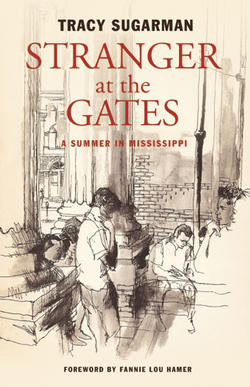Читать книгу Stranger at the Gates - Tracy Sugarman - Страница 8
На сайте Литреса книга снята с продажи.
INTRODUCTION
ОглавлениеThe first time I ever traveled to Mississippi was on the Freedom Rides. I was one of the 13 original riders who left Washington, DC on May 4, 1961, to test a recent Supreme Court decision that desegregated interstate bus travel. Our goal was to ride from Washington, D.C. to New Orleans in an integrated fashion, through the Deep South, where it was illegal for black and white passengers to sit next to each other.
Because of mob violence some of us encountered in South Carolina and cities in Alabama, the rides were almost suspended. But we believed we had to continue because if we allowed brutality to deter us, then it would send a message that violence could silence a non-violent campaign. We were determined to carry on, despite the threat to our lives. We continued on until we got to Jackson, Mississippi.
We were immediately taken to jail, but busloads of peaceful protestors kept coming until we filled the city and county jails. Eventually we were transferred to a notorious prison farm named Parchmen Penitentiary, a 21,000 acre farm owned by the state and worked by inmates. We stayed in Parchmen for more than three weeks. They had tried to break us there, but when we emerged, we were more convinced than ever before that we could take on the challenge of voting rights in Mississippi.
It was very dangerous to be a civil rights worker in Mississippi in the mid-sixties. SNCC’s files revealed that since work in 1961 began, there had been over 150 incidents of violence perpetrated against civil rights workers. Several had been killed, but only five percent of the voting- age African Americans had been registered, still the lowest in the nation.
We knew that somehow we needed to create a sense of urgency, so SNCC’s Mississippi leader, a brilliant man named Robert Moses, suggested we invite people to come to see the resistance in Mississippi for themselves. My role as chairman of SNCC, during those days, was to travel around the country to college campuses and ask students to come. Hundreds came to Mississippi that summer, and Tracy Sugarman was one of them.
This book is his account of his experiences there at a revolutionary period in American history. The students who came during that summer helped to make a shift in American politics. Mississippi became the best organized SNCC effort in the country, and the foundation that Robert Moses laid to carry out a mock election, called Freedom Vote, and then to establish the Mississippi Freedom Democratic Party, with Fannie Lou Hamer at the helm, changed the shape of Democratic Party politics. It also created a network of political activists who are still working for change there today. That is why, even with all the problems that remain, Mississippi still has the highest number of black elected officials of any state in the country.
Tracy Sugarman’s story is important because it tells the story of how this happened. We are very fortunate today that most of us do not have to fear for our lives to register and vote, but there was a time, not so long ago, when people had to give their lives so that you and I could participate more freely in the democratic process. The right to vote is precious, almost sacred. It is the most powerful non-violent tool we have for change in a democratic society. And this is the story of what one man saw, and what was sacrificed to secure that right for all American citizens.
Congressman John Lewis
April, 2014
